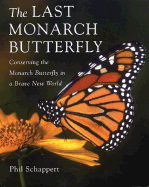 |
| Released Monarchs on Waystation No. 613 |
Monarch enthusiasts! Here's a wonderful story about the Monarch butterfly from the Journal of Biology (June 19 2009).
 Minireview: Clocks, cryptochromes and Monarch migrations.
Minireview: Clocks, cryptochromes and Monarch migrations.by
Charalambos P Kyriacou
Department of Genetics
University of Leicester, Leicester LE1 7RH, UK
Abstract: The annual migration of the Monarch butterfly (Danaus plexippus) from eastern North America to central Mexico is one of nature's most inspiring spectacles. Recent studies including one in BMC Biology, have begun to dissect the molecular and neurogenetic basis for this most complex behavior.
Miniview: At the approach of fall in the northern United States and southern Canada, the Monarch butterfly, Danaus plexippus, starts to get restless. These butterflies usually represent the third or fourth generation that season, each previous generation having lived for around 6-8 weeks. The current generation senses the shorter photoperiod of autumn days and starts to shut down its reproductive system, lay down extra layers of fat, and in general become more physiologically resistant to environmental stresses such as colder temperatures. This state of diapause precedes one of nature's most glorious sights, the annual autumn migration of the Monarch from the northern United States to its overwintering grounds in central Mexico, where it settles in oyamel fir trees.
 |
| Order online |
 |
| Order online |
Butterfly migration and the circadian clock: This remarkable feat represents the longest annual insect migration known and has become a focus of study for the circadian biologist Steven Reppert and his group at the University of Massachusetts in Worcester. In a series of papers over the past few years, they have confirmed that, like migrating birds, the Monarch depends on its circadian clock to find the right direction. It has a time-compensated sun compass, so if the clock is made arrhythmic (by placing the butterfly in constant bright light for a few days), or is phase-shifted by a few hours, the butterfly will lose its way, because it uses the time to tell it where the sun should be in the sky.
 |
| Order online |
Following the milkweed trail north: One question Reppert and his team wished to answer was whether the spring and summer butterflies orient northwards (in the same way as their parents and (great)grandparents did southwards) in order to return north from Mexico, or whether they simply work their way north following the milkweed trail. In a study by the group published recently in BMC Biology, Zhu et al. treated diapausing fall butterflies with a juvenile hormone (JH) analog and showed that this stimulated reproductive development as expected. They observed, however, that the treated individuals were still able to fly directionally and point south towards Mexico. This means that although JH shutdown stimulates
 diapause and may initiate celestial orientation, JH deficiency is not required to maintain directionality, which can be independent of reproductive state. In contrast, the majority of wild-caught summer butterflies did not show any directional response, confirming earlier reports. These results therefore suggest, with some caveats, that the spring and summer butterflies may simply follow the milkweed back home rather than actively orienting with their compass. (Above photo: Waystation 613 side yard- Common, Swamp and Tropical milkweed. I've witnessed Monarchs flying down our street, then abruptly turn into our side yard and alight on them)
diapause and may initiate celestial orientation, JH deficiency is not required to maintain directionality, which can be independent of reproductive state. In contrast, the majority of wild-caught summer butterflies did not show any directional response, confirming earlier reports. These results therefore suggest, with some caveats, that the spring and summer butterflies may simply follow the milkweed back home rather than actively orienting with their compass. (Above photo: Waystation 613 side yard- Common, Swamp and Tropical milkweed. I've witnessed Monarchs flying down our street, then abruptly turn into our side yard and alight on them) |
| Order online |
It remains to be seen how important any of these are to the orientation phenotype; this can only be assessed by direct manipulation of these molecules in the brain.Monarch magnetism? The receptors for polarized UV light in the butterfly's retinal dorsal rim and their input to the circadian time-oriented sun compass help point the way to Mexico. But many animal compasses rely on magnetic fields, so how might magnetoreception be encoded within the Monarch? Reppert's group has also recently carried out a study of magnetoreception in Drosophila melanogaster. Using flies trained to respond to a magnetic field, it was apparent that various fly strains showed a modest magnetosensitivity, but only when light in the near-blue region was included. These wavelengths (around 420 nm) fit the action spectrum of Drosophila CRY, and indeed it has been speculated that the photoinducible electron-transfer reaction of this flavoprotein generates magnetosensitive radical pairs. In support of this hypothesis, fly loss-of-function cry mutants were severely compromised in their magnetosensitivity.
 |
| Order online |
Robert Morton, M.Ed., Ed.S believes urban sprawl can be offset by creating wildlife-friendly spaces in America's 25,000,000+ acres lawns, one yard at a time! Click HERE to learn why. A portion of Ad revenues (10%) will be donated to Monarch Watch, earmarked for their Monarch Waystation program. Do you have a wildlife-friendly space? Please share it by Contacting Us!

